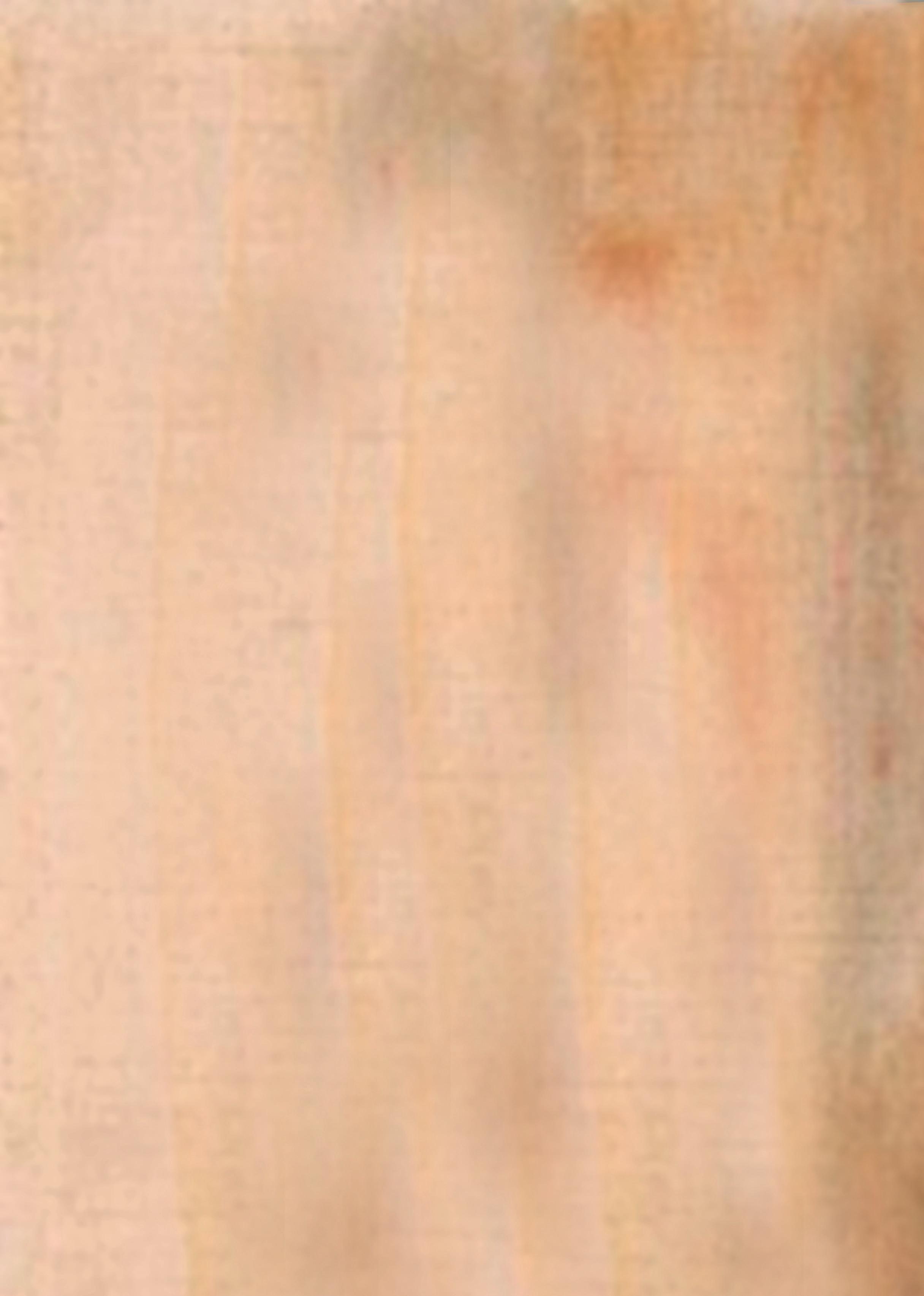








24 Stücke f ür die Mittelstufe
Darunter die Erstbearbeitung von Napoléon Costes „Lolla“
Including the rst arrangement of Napoléon Coste,s “Lolla”
Noten & Tabulatur

Liebe Musikfreunde, liebe Schüler,
nach der positiven Resonanz auf „Meister der spanischen Musik“ erscheint nun ebenfalls in der FingerPrint-Reihe „Meister der französischen Musik“. Dieses Heft enthält eine kleine Sammlung mit 24 der schönsten Stücke für Gitarre.
Die französischen Komponisten standen in Europa oft im Vordergrund des musikalischen Geschehens. Sie haben die jeweiligen Tendenzen und Entwicklungen in der Musikgeschichte entscheidend beeinflusst und mitgestaltet. So brachte ein reges Musikleben am Hof Ludwigs XIV. solche einflussreiche Meister der Barockzeit wie Jean-Baptiste Lully und Robert de Visée hervor. Der Klassizismus ist in dieser Auswahl durch Jean Paul Martini vertreten.
Sehr spannend und abwechslungsreich war die Zeitepoche der Romantik. Hier habe ich sowohl populäre Musik von Gabriel Fauré und Napoléon Coste, als auch weniger bekannte Werke von Jacques Bosch, Alfred Cottin und Antoine Meissonnier vorbereitet. Außerdem findet ihr aus dieser Zeit populäre „minimalistische Skizzen“ von Erik Satie sowie impressionistische „Klangbilder“ von Maurice Ravel und Claude Debussy.
Einige Stücke wurden bearbeitet, damit sie etwas leichter zu spielen sind als im Original, so dass alle vorliegenden Werke für fortgeschrittene Schüler der Mittelstufe gut spielbar sind. Jeder Komposition geht ein Text voraus: Hier gibt es allerlei Wissenswertes zur Musik, Infos zu den Autoren, Übungstipps und noch vieles mehr.
Diese Ausgabe enthält sowohl eine traditionelle Notation mit ausreichenden Fingersätzen als auch eine Tabulatur. Die beiliegende CD und ein Mini-Lexikon ergänzen das Heft. Und wenn ihr noch Fragen habt, auf YouTube gibt es mehrere Tutorials, die das Erlernen der hier vorgestellten Kompositionen erleichtern.
Ich wünsche euch viel Spaß und Erfolg!
Konstantin Vassiliev
FOREWORD
Dear music lovers and students,
On the heels of the positive response to our title “Masters of Spanish Music”, we now present “Masters of French Music” as part of our FingerPrint series. As such, this book is a collection of 24 of the most beautiful pieces for guitar.
French composers have frequently been at the forefront of Europe’s musical activities, and historically, they’ve had significant impact on tendencies and developments of musical styles. For instance, the music in the court of Louis XIVs allowed influential masters of the Baroque era such as Jean-Baptiste Lully and Robert de Visée to emerge. In this collection, classicism is represented by Jean Paul Martini.
The Romantic period was especially varied and enthralling time for French composers, and I’ve included popular music by Gabriel Fauré and Napoléon Coste, as well as lesser-known works by Jacques Bosch, Alfred Cottin, and Antoine Meissonnier. In addition, in this period you’ll find popular “minimal sketches” by Erik Satie and impressionist “sonic pictures” by Maurice Ravel and Claude Debussy.
Several of the pieces have been arranged to be easier to play than the original, and all of the included works should be very playable for intermediate students. Each composition includes an introductory text with a background about the music, information about the composer, practice tips, and more.
This edition includes traditional notation with fingerings as well as tablature. The book is completed by the included CD and a reference section. And for those of you with additional questions, we’ve prepared several tutorials that will help with learning the pieces on our YouTube channel.
I hope you enjoy this book!
Konstantin Vassiliev
Inhalt / Content CD-Track
/
Vorwort / Foreword 2
1 Siciliana (Antoine Meissonnier) 4
2 Boléro (Maurice Ravel) 6
3 Églantine ( Alfred Cottin) 12
4 Pasa Calle (Jacques Bosch) 14
5 Barcarolle (Napoléon Coste) 18
6 Élégie (Jules Massenet) 20
7 Lolla (Napoléon Coste) 24
8 Souvenir d’Andalousie (Alfred Cottin) 26
9 Plaisir d’amour (Jean Paul Martini) 30
10 Balalayka (Alfred Cottin) 32
11 Gnossienne No. 1 (Erik Satie) 36
12 Menuet I (Robert de Visée) 40
13 Menuet II (Robert de Visée) 42
14 Bourrée ((Robert de Visée) 43
15 Gymnopédie (Erik Satie) 44
16 Pavane ( Gabriel Fauré) 46
17 Sicilienne (Gabriel Fauré) 50
18 L’Épineuse (François Couperin) 52
19 Andantino (Napoléon Coste) 56
20 Gavotte (Jean-Baptiste Lully) 60
21 Pavane (Maurice Ravel) 62
22 Le cygne (Camille Saint-Saëns) 66
23 La diva de l’empire (Erik Satie) 69
24 La fille aux cheveux de lin (Claude Debussy) 72


Erik Satie war ein eigenartiger Querdenker und komponierte Musik, die dem Stil seiner Zeit entgegengesetzt stand. Das Wort „Gnossienne“ entstammt vermutlich dem Begriff „Gnosis“, einer antiken, religiös-philosophischen Bewegung. Allerdings weisen die etwas skurrilen Kommentare im Notentext eher auf einen ironischdistanzierten Umgang des Komponisten mit dieser Bewegung hin. Die schwer deutbaren „Vortragsanweisungen“ sind eine Art Geheimbotschaft, ein heimlicher Dialog mit dem Musikinterpreten. Andererseits steckt darin viel gesellschaftliche Satire:
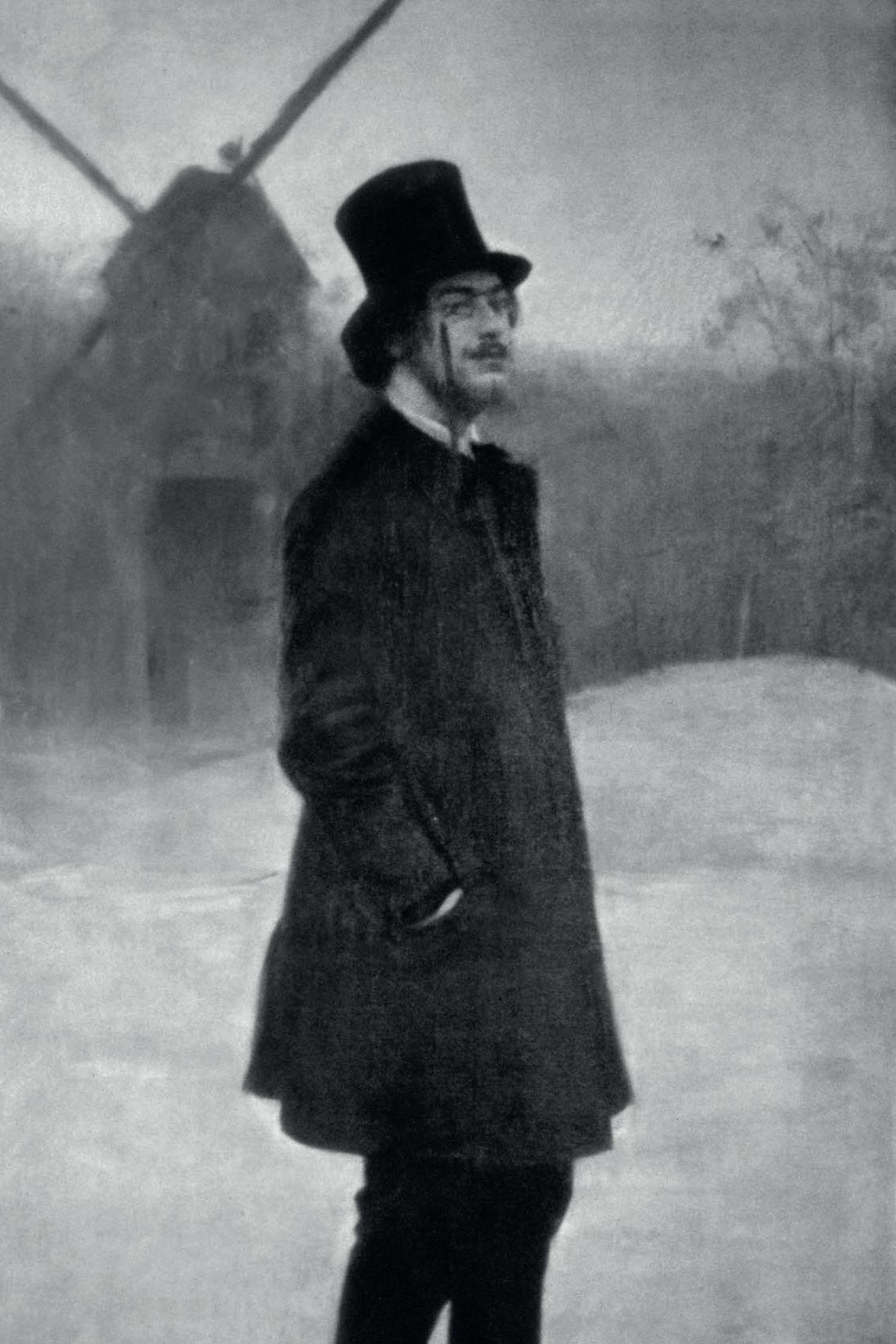
„Très luisant“ = Sehr leuchtend „Questionnez“ = Nachfragend „Du bout de la pensée“ = Vom Rande des Gedankens aus „Postulez en vous-même“ = Innerlich abwägend „Pas à pas“ = Schritt für Schritt
„Sur la langue“ = Auf der Zungenspitze
Erik Satie was an unconventional thinker, and he composed music that was contrary to the popular styles of his time. The word “Gnossienne” most-likely comes from the term “Gnosis”, an ancient, religious-philosophical movement. But Satie’s somewhat comical comments in the notes to the music point more toward an ironic and distanced association with it. Difficult to interpret, his “performance instructions” appear to be a kind of a secret message, a mysterious dialogue with the interpreting musician. On the other hand, it includes a bit of social satire:
“Très luisant” = Very brightly “Questionnez” = Inquiring
“Du bout de la pensée” = At the top of one’s thought “Postulez en vous-même” = Wonder about yourself “Pas à pas” = Step by step “Sur la langue” = On the tongue
Takte 14-15, 32-33, und 38-39; Hier ist eine Alternative für fortgeschrittene Gitarristen:
Measures 14-15, 32-33, and 38-39; alternative for advanced guitarists:
Camille Saint-Saëns war ein französischer Komponist, Organist, Pianist, Pädagoge und Musikwissenschaftler. Als Kind wurde er „französischer Mozart“ genannt – genau wie sein Vorbild komponierte er bereits mit 6 Jahren und gab wenig später seine ersten öffentlichen Konzerte. Mit 15 Jahren schrieb Saint-Saëns seine erste Sinfonie und ein Jahr später war er bereits Student an der Pariser Universität. Ende des 19. Jahrhunderts galt er als bedeutendster Komponist Frankreichs und blieb bis zu seinem Tod musikalisch sehr aktiv.
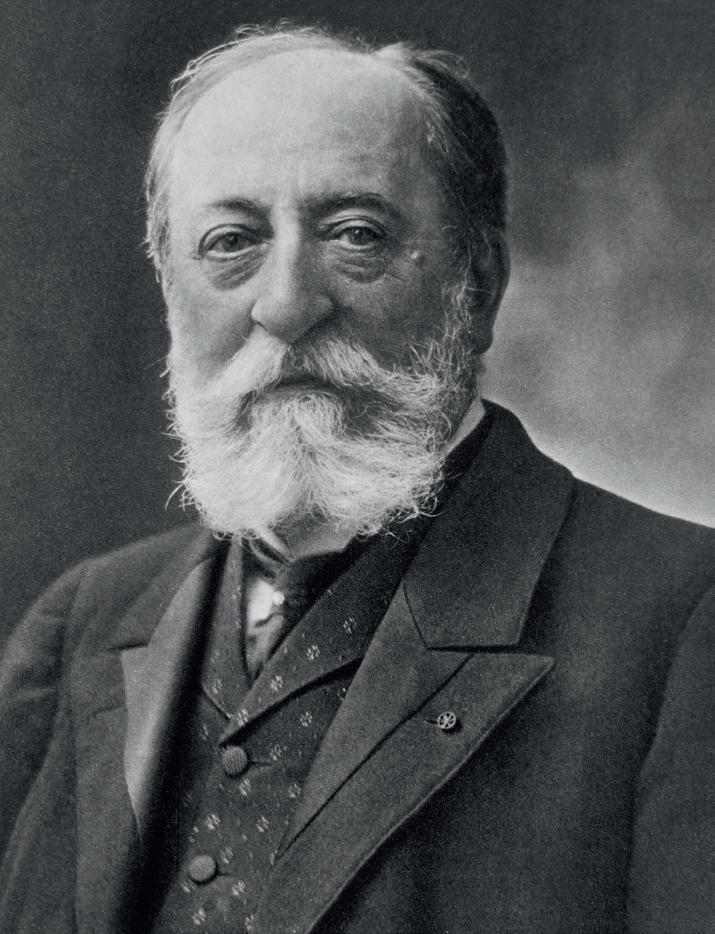
Saint-Saëns hinterließ mehrere Klavier- und Orgelwerke, Orchester-Sinfonien, sowie Kammermusik für verschiedene Besetzungen.
Besonders beliebt ist seine Suite für Kammerorchester „Karneval der Tiere“. Zu Lebzeiten des Komponisten nicht veröffentlicht, ist es heute sein bekanntestes Werk. Interessant sind die Komponistenparodien und die Imitationen der Tierrufe durch die Instrumente. „Le cygne“ („Der Schwan“) ist das meistgespielte Stück aus der Suite. Ein mäßiges Tempo und die tiefe Cello-Klangfarbe lässt ein nobles Klangbild des schönen Schwans entstehen.
Camille Saint-Saëns was a French composer, organist, pianist, educator, and musicologist. As a child, he was called “The French Mozart”. Like his idol, he started composing at the age of six, and he started giving public concerts just a short time later. Saint-Saëns wrote his first symphony at the age of 15, and a year later, he was a student at the University of Paris. By the end of the 19th century, he was considered to be the most significant French composer, and he stayed musically active right until his death.
Saint-Saëns left us several piano and organ works, symphonies for orchestra, and chamber music for various instrumentations.
Though it wasn’t published during his lifetime, his chamber orchestra suite “Le carnaval des animaux” (“The Carneval of the Animals”) is now his bestknown work. Of particular interest are the allusions of other composer’s pieces that are contained in the piece, as well as its attempts at imitating the animal’s calls. “Le cygne” (“The Swan”) is the most-played piece of the suite. A moderate tempo and the deep cello-timbre creates a noble sonic impression of a beautiful swan.


cantabile gesangvoll, sangbar sonorous, singable
cédez zögernd slow
cresc. (crescendo) lauter werdend growing louder
dim. (diminuendo) leiser werdend diminishing
dolce sanft, lieblich sweet, soft
doucement sanft gently
douleur Schmerz pain
douloureux schmerzhaft painful
doux sanft gently
Élégie Klagelied, Elegie a lament, elegy
en élargissant breiter werdend broadening
en mesure im Takt in time
expressif ausdrucksvoll expressive
fine Schluss end
Gavotte ein französischer Gesellschaftstanz a French dance
Habanera ein langsamer Tanz kubanischer Herkunft a slow dance of Cuban origin
large breit broad
lent, lento langsam slow
Impressum:
Titelfoto: http://www.wikiart.org/en/pierre-auguste-renoir/woman-with-guitar
Foto Seite 11 und Seite 23: Manfred Pollert
weitere Fotos: Wikimedia Commons, PD-old
Gestaltung: Manfred Pollert
Notensatz: Konstantin Vassiliev
Lektorat: Monika Kotte
Englische Übersetzung: Teja Gerken
Produktion: Peter Finger © 2017 by Acoustic Music GmbH & Co. KG, Osnabrück
Das Notenbild ist urheberrechtlich geschützt und darf nicht ohne Genehmigung des Verlages vervielfältigt werden. Music engraving copyright protected.
Best.-Nr. FP 8169
ISBN: 978-3-945190-14-2
ISMN: 979-0-700307-70-7
FingerPrint / Acoustic Music GmbH & Co. KG
Arndtstraße 20 · 49080 Osnabrück
Tel.: +49(0)541-71 00 20 · Fax +49(0)541-70 86 67
E-Mail: order@acoustic-music.de www.acoustic-music.de www.fingerprint-verlag.de









Konstantin Vassiliev wurde in Sibirien (Russland) geboren. Er studierte an den Hochschulen für Musik in Novosibirsk und in Münster/Westfalen. Neben seinen Konzerten und der pädagogischen Tätigkeit beschä igt er sich mit der Literaturerweiterung für Gitarristen aller Altersstufen. Seine zahlreichen Kompositionen und Bearbeitungen werden sowohl in Europa als auch in Japan, Kanada und den USA publiziert. Zudem ist er Preisträger mehrerer internationaler Kompositionswettbewerbe. Seine Musik erklingt experimentell und innovativ, ist aber auch von Traditionen, vor allem der klassischen russischen Schule, geprägt. Sein Musikstil zeichnet sich aus durch Vielfältigkeit: von romantischer Melancholie über impressionistische Fantasterei und Mystik bis zur zeitgemäßen Expressivität.
Konstantin Vassiliev was born in Siberia (Russia). He studied at the Academies of Music in Novosibirsk and in Muenster/Westphalia. Apart from giving concerts and teaching guitar Vassiliev has concerned himself with adding to the literature available for guitar players of all ages. His numerous compositions and arrangements have been published in Europe, as well as in Japan, Canada and the USA. In addition he won several awards at various international composition contests. His music sounds experimental and innovative, but it is also stamped by tradition, above all that of the classical Russian school. His musical style distinguishes itself by its diversity: from romantic melancholy through impressionistic fantasies and mysticism, right up to contemporary expressiveness.
Meister der französischen Musik
Das Spielhe „Meister der französischen Musik“ enthält eine bezaubernde Sammlung französischer Stücke aus mehreren Epochen, arrangiert für Gitarre, darunter eine Erstbearbeitung. Gitarrist/innen mit etwa drei bis vier Jahren Unterrichtserfahrung nden hier wunderschöne Arrangements im mittleren bis leicht fortgeschrittenen Schwierigkeitsgrad.
• Noten und Tabulaturen
• Begleit-CD
• Mini-Lexikon
e tutorial “French Masterpieces” contains an enchanting compilation of French guitar pieces from di erent eras, including one arrangement rst published for guitar. Players with three or four years of study experience will nd beautiful arrangements of French music at levels of di culty ranging from intermediate to easy advanced.
• Notation and Tabs
• Accompanying CD
• Reference Section
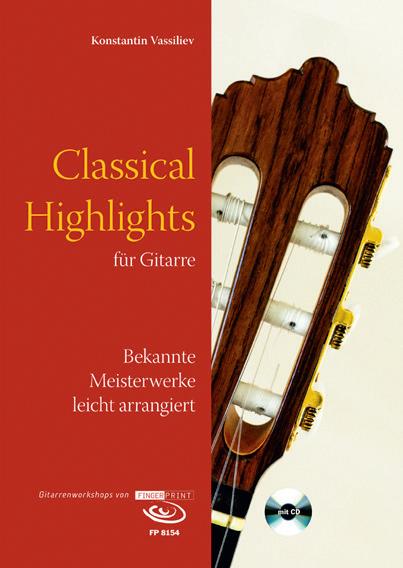



Konstantin Vassiliev:
Classical Highlights
26 leichte bis mittelschwere Arrangements der beliebtesten Kompositionen aus Barock, Klassik und Romantik
26 works in easy to moderate arrangements from three epochs: Baroque, Classical and Romantic
Buch, 36 p. + CD, nur Noten / notation only, order no.: FP 8154
Konstantin Vassiliev: Meister der spanischen Musik
Bekannte und neu entdeckte Stücke, leicht arrangiert für Gitarre
Spanish masterpieces easy arranged
Buch, 72 p. + CD, Noten und Tabulaturen, notation and tabs, order no. FP 8165


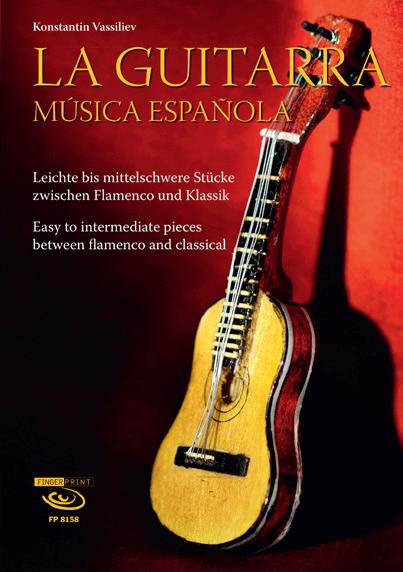

Konstantin Vassiliev: La Guitarra.
Leichte bis mittelschwere Stücke zwischen Flamenco und Klassik
Easy to intermediate pieces between amenco and classical
Buch, 48 p. + CD, nur Noten / notation only, order no.: FP 8158
Best.-Nr. FP 8169
ISBN: 978-3-945190-14-2
ISMN: 979-0-700307-70-7